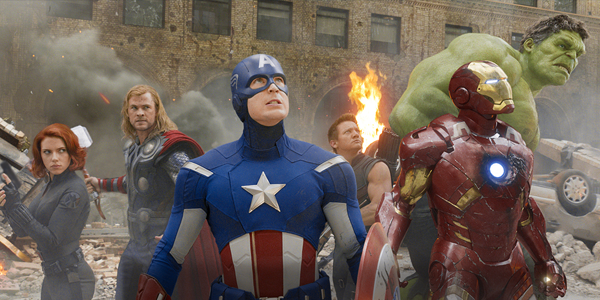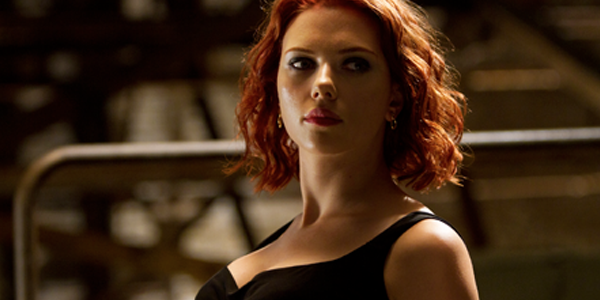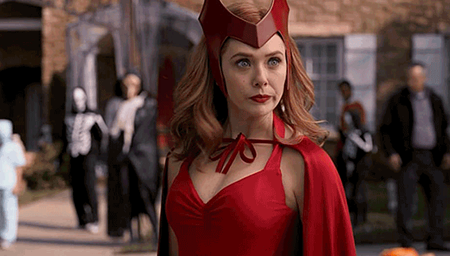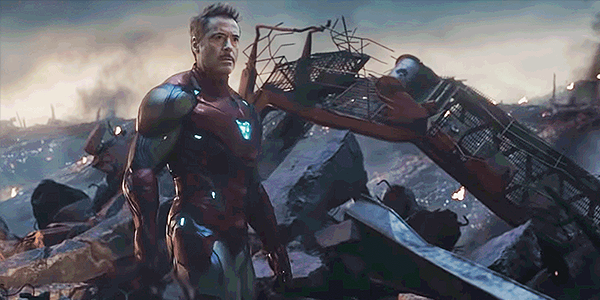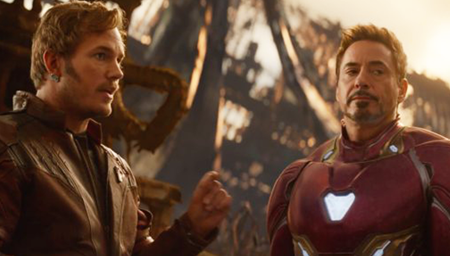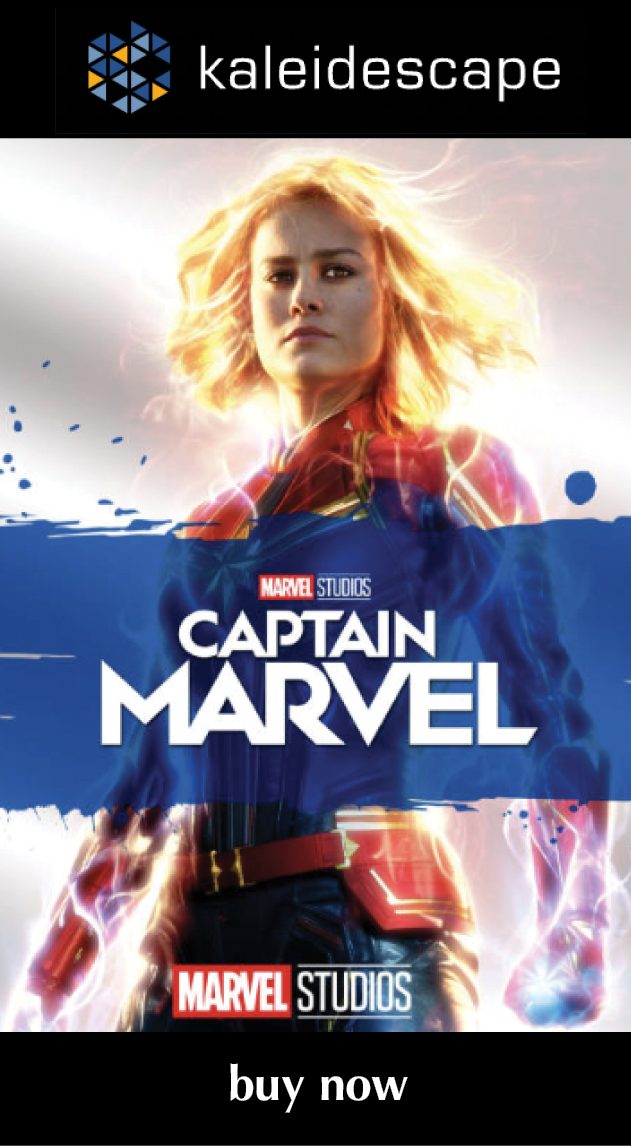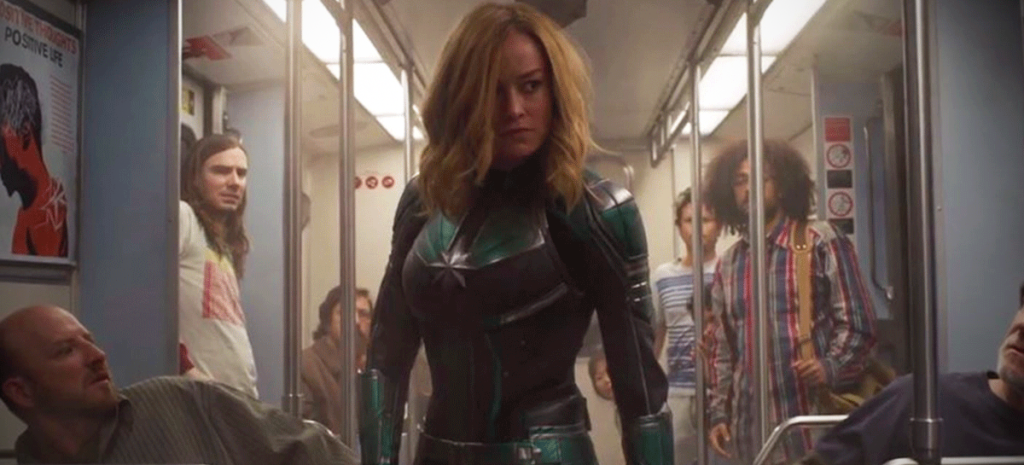
review | Captain Marvel
This controversial entry in the MCU helps to fill in some of the holes in the various plotlines leading to Endgame
by John Sciacca
May 29, 2019
Like millions of other people, my family and I have been following the Marvel Cinematic Universe (MCU) as it gradually built to the global phenomenon of a climax that was Avengers: Endgame. But my favorite film in the franchise remains Avengers: Infinity War, and if you’ll recall from the end-credits scene, just as Nick Fury (Samuel L. Jackson) is about to disappear into a Thanos-snapped dust cloud, he pulls out an ancient-looking pager and manages to send off one final message. As the pager falls from his fingers and starts sending the message, its screen changes to reveal a logo familiar only to hardcore Marvel fans.
That brief scene introduced us to one of the most powerful characters in the MCU, Captain Marvel (Brie Larson), and perfectly set up the 21st and final Marvel film that would precede Endgame. I’ll admit, I didn’t recognize the logo, nor did I know who Captain Marvel was or anything about her story, so I went into the film fresh and curious about what bits of the MCU puzzle this might fill in. For the record, Marvel Studio’s president, and producer of every film in the MCU, Kevin Feige said, “Captain Marvel is going to be the most powerful superhero in the MCU,” so that should give you some perspective. (And those who have seen Endgame—which, seriously, by now should be all of you—will attest to her abilities.)
While Marvel films are usually met with excitement and anticipation, there was actually a lot of hate surrounding Captain Marvel’s release. So much so that Rotten Tomatoes adjusted its rating policy when it was clear trolls were posting negative reviews and hatred over Larson’s casting and acting before the film was even released. Adding to the controversy, Captain Marvel was originally a male character in the comics (although different characters have taken up the Captain Marvel mantle, and there is precedence for the character to be a woman), and many felt casting Larson was a way to push a social agenda. All of which didn’t interest me or sway my opinion in the least.
Give me a good movie I can sit and enjoy for two hours, and I don’t care if the lead is a man, woman, animal, or robot. I’ve got two daughters and I’m all for female empowerment. (And for the record, my 12-year-old loved it, saying “Captain Marvel was so cool and tough!”) And, if you avoided Captain Marvel for fear it would try to cram some social agenda down your throat, I’d strongly suggest you reconsider.
The first thing you’ll notice about Captain Marvel is a change to the opening credits scene. I won’t spoil it here, but let’s just say the folks at Marvel once again know how to give you the feels.
It seems like the Marvel team knew Captain Marvel would be a new character to many and they chose a storytelling style that played into this, as we discover things about Larson’s character’s past along with her. The story opens with Vers (Larson) as an elite member of the Kree Starforce Military living on planet Hala. Vers suffers from amnesia and just has snatches of visions and images of a previous life but none of which she can assemble into a cohesive whole.
During a mission to rescue a deep-cover operative from a band of alien shapeshifters known as Skrulls, Vers is captured and her memories are probed by the Skrulls as they try to determine the location of some experimental tech she was involved with in her previous life on earth as Air Force fighter pilot Carol Danvers.
These memories lead both the Skrulls and Vers to Planet C-53—aka Earth—where we encounter a digitally de-aged and fresh-on-the-job S.H.I.E.L.D. agent with two working eyes by the name of Fury. (“Not Nicholas. Not Joseph. Just Fury.”) From here, the film moves forward with a steady stream of action, with Danvers gradually regaining memories of her life on earth as they piece together clues to hunt the experimental tech developed by Dr. Wendy Lawson (Annette Bening) and avoid Skrull shapeshifters hot on their trail.
Taking place in 1995, the movie features a soundtrack that includes lots of era-appropriate tunes including “Waterfalls,” “Come as You Are,” “Just a Girl,” and “Man on the Moon.” Sometimes the songs are subtle and in the background, other times they take center stage à la Guardians of the Galaxy and Star-Lord’s Awesome Mix Tapes. There are also some other nice ‘90s-era references to bygone culture like Blockbuster and Radio Shack.
Visually, Marvel is a treat. Filmed in a combination of 6.5K and 8K and taken from an 8K negative, the movie has gobs of detail in every scene. Closeups abound with texture, letting you see the pebbling and grain in Fury’s shoulder holster or an alien’s skin or the metallic surfaces of the various spaceships. There’s a scene about 10 minutes into the movie where they visit a planet that’s covered in a smoky, hazy mist. This is a total video torture test for noise and banding, especially as the smoke is illuminated in a variety of ways from lights, fire, and streaking laser bolts, but the image is always stable, clean, and noise-free.
The movie also greatly benefits from HDR, with lots of brightly lit screen displays and readouts throughout that really pop. There are also lots of scenes in dark interiors that benefit from the wider dynamic range, letting you appreciate the detail of the set design. Near the end, when Marvel embraces her full powers, she literally glows with energy and power, and the effect works especially well in HDR.
Sonically, while many recent Disney releases have stumbled, Captain Marvel’s Dolby Atmos mix does a lot to correct this. They seemed to have eased off on the heavy-handed compression and uneven bass mixes that have plagued other releases (see my review of Avengers: Age of Ultron), and this movie has some very scene-appropriate low end that will take your subwoofers to church and flutter your pant legs. Explosions have dynamic depth and punch, and space engines thrum with authoritative bottom end.
The audio mix is definitely active and immersive but not overly aggressive. The height speakers are used to good effect to expand the sonic ambience and sense of space, and come into play during the big action scenes. One especially nice and clever use of the height channels is during the scene where they’re picking through Danver’s memories, with off-camera voices moving about overhead.
While not required viewing prior to seeing Endgame, Captain Marvel does a nice job of filling in some little holes and fleshing out the MCU, and would technically be the first film in the timeline (if you start counting from when Captain America comes out of his ice coma). Its end-credits scene also does a nice job of marrying right into Endgame and explaining why Captain Marvel was absent from the big battle in Wakanda.
Probably the most experienced writer on custom installation in the industry, John Sciacca is co-owner of Custom Theater & Audio in Murrells Inlet, South Carolina, & is known for his writing for such publications as Residential Systems and Sound & Vision. Follow him on Twitter at @SciaccaTweets and at johnsciacca.com.
PICTURE | Captain Marvel is a treat, with gobs of detail in every scene and closeups that abound with texture
SOUND | The Atmos mix helps correct the anemic soundtracks of other Marvel releases with some very scene-appropriate low end that will take your subwoofers to church and flutter your pant legs
© 2025 Cineluxe LLC


